Plant-Based baking can be easy, fun, and just as delicious as any of your favorite traditional baking recipes. Here’s my basic guide to plant-based baking to show you how it can be done!
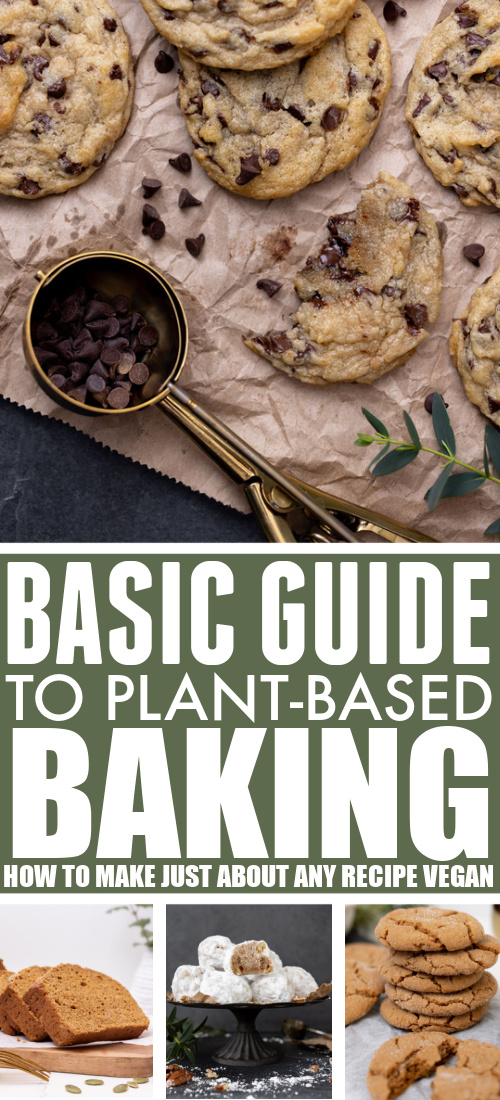
Whether you’re wanting to try plant-based baking for yourself, or whether you’ll be needing to cook for upcoming plant-based friends and family, there’s no need to be intimidated and I’m hoping this little guide will help. It’s possible to convert just about any of your favorite traditional baking recipes into plant-based recipes with a few easy swaps. You’ll be surprised to find just how many commercial products are available out there to make it a pretty seamless process, and even how you can often make your recipes a little bit healthier without a whole lot of extra effort. A lot of people think the process of plant-based baking seems really challenging, but if you’ve been wanting to give it a try, you’ll be pleasantly surprised at how simple and rewarding it is. Here’s my guide to help you get started!
Does Plant-Based Baking Use a lot of Weird Ingredients?
I think that plant-based baking has gotten a bad reputation for using a lot of things that you might not already have in your pantry, for taking a lot of extra time, and for being very expensive. A lot of this has happened because people have seen a video or a viral recipe somewhere along the way where someone has used something really unusual and creative in the place of a traditional baking ingredient, usually with a lot of extra steps added to the process. Some people find this to be a really fun and interesting challenge, and they do it kind of just to amuse themselves and see what they can come up with, but it definitely doesn’t have to be that way. Plant-based baking in my kitchen looks very similar to traditional baking and the results are basically identical. Well, the results are actually much better for me these days because I’ve had quite a bit of practice at this point. 🙂
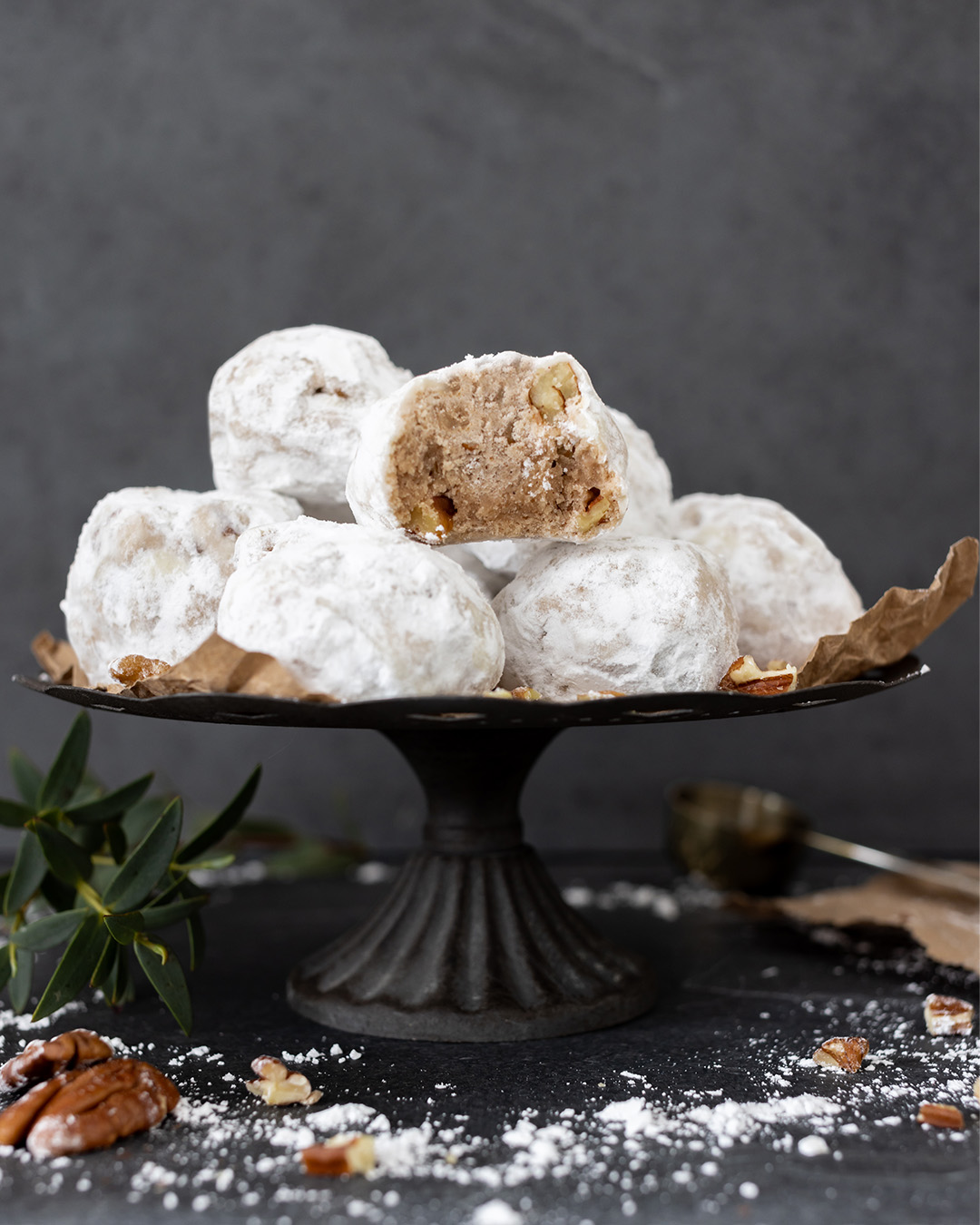
Does All Plant-Based Baking Have Black Beans in it?
It seems like every time I make something chocolate, people seem to think that it has black beans hidden in it, thanks to a popular brownie “hack” from a few years ago. Hiding black bean puree in your darker baked goods can be a fun way to add protein, fibre, and richness to your baked goods, but it’s not necessary at all.
How to Make Any Recipe Vegan
Truthfully, you won’t be learning entirely new, backwards methods for baking for most of your plant-based baking endeavours. I do have a few recipes that we love that I make in a bit of a different way, but mostly my baking process is the same as a traditional baking process with just a few substitutions that switch out animal-based products for ones made from plants. In my classic recipes that I like to make, I usually only have to think about switching out things like butter, eggs, and milk.
Other than the fact that it makes life really simple, I also love that this makes most of the recipes that I share accessible for everyone, no matter what they have in their pantry. You can easily switch any of the ingredients in my recipes back to traditional ingredients if that’s what you have right now. You can also just try switching out one thing, like trying a plant-based egg substitute, to see how you like it. You can just dip your toe into the world of plant-based baking and make the transition to fully plant-based whenever you and your family are ready.
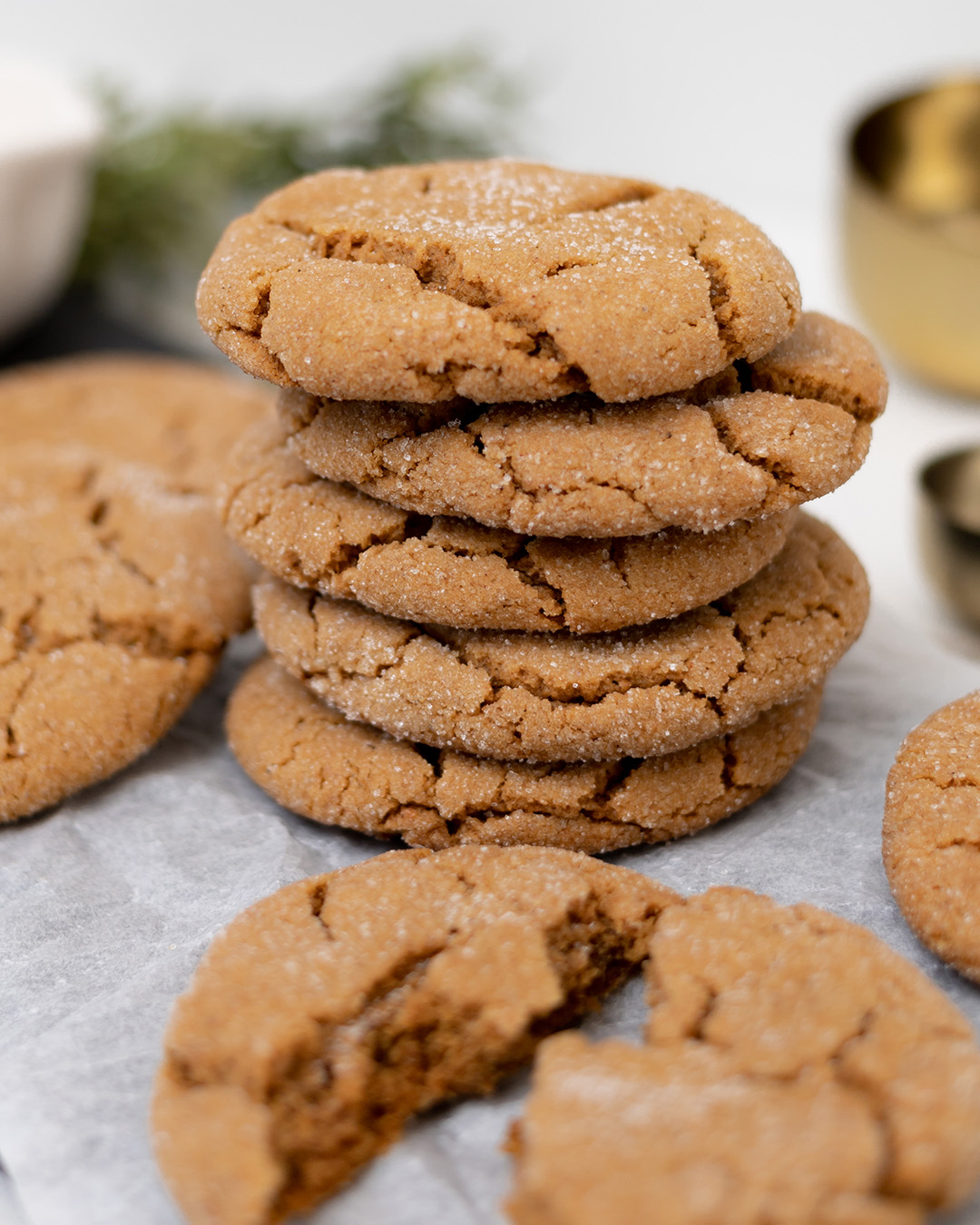
Plant-Based Butter Substitutes for Baking
There are lots of plant-based butters on the market these days and they’re easy to find in any grocery store. I used to always gravitate towards to more expensive butter substitutes for my baking because I was sure that I would get better results. I had heard that a lot of bakeries use Becel brand vegan butter in their baked goods and I thought that surely this was just an attempt to keep costs down, but I started using Becel vegan sticks a few months ago and I have to admit that they’re perfect. The consistency of the butter is easy to work with and the fact that it comes in stick form makes measuring quick and easy. The stick form butter substitute definitely has a different consistency compared to the spreadable butter substitute that comes in a tub, so keep that in mind. Both can be used, but I find I get better results and prettier baked goods with the stick butter.
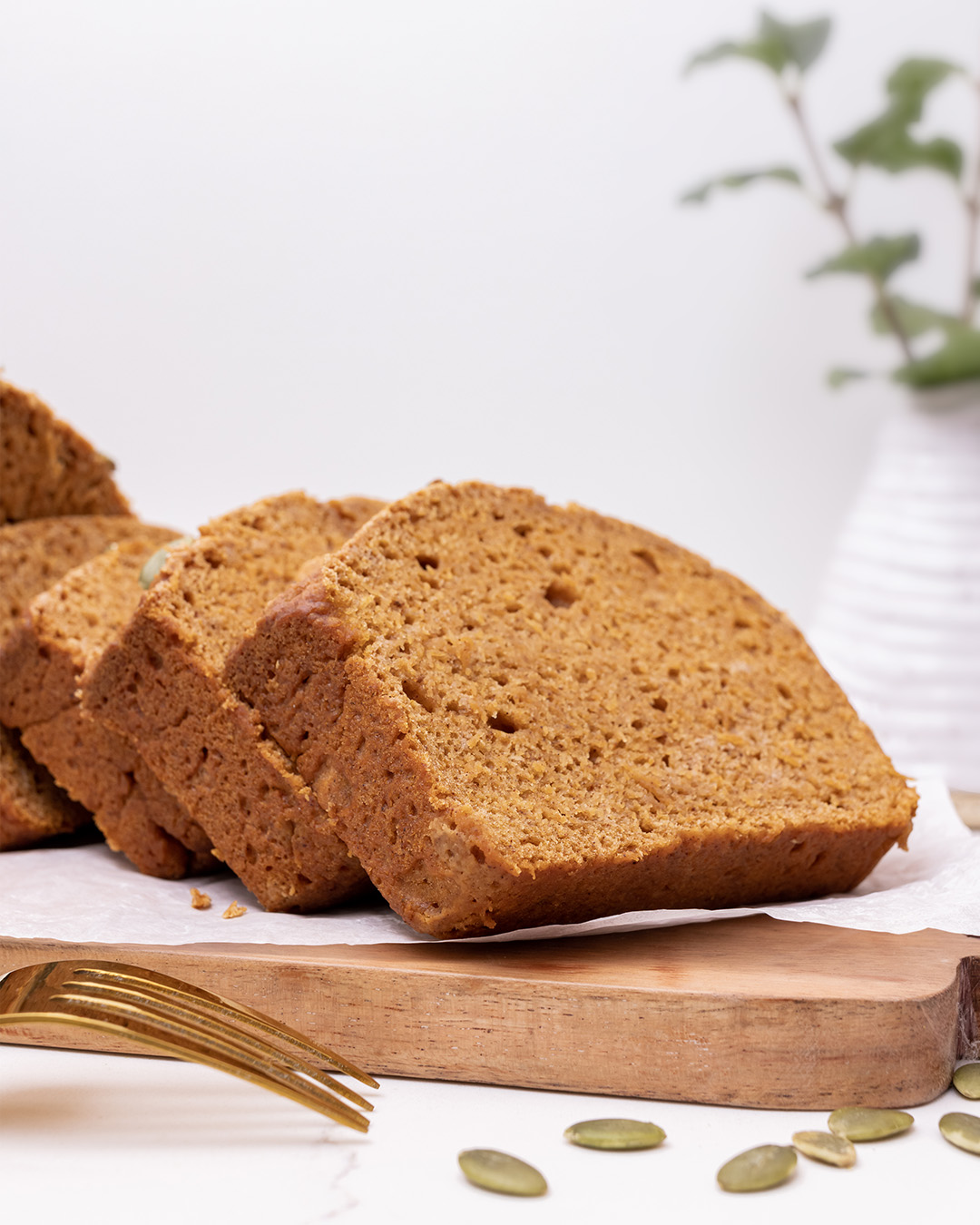
If you’re looking to really make your baked goods a lot healthier, you can look into substituting apple sauce, banana puree, or pumpkin puree into your baked goods. My three ingredient pumpkin bread does just that and it comes out just as moist and delicious as if I used butter. If you’re really sensitive to sweetness, you might find that using apple sauce or banana puree makes your baked goods too sweet, so you may want to decrease the sugar in your recipe a bit, but honestly that’s never a big problem in our house. 🙂 Apple sauce, banana puree, and pumpkin puree can all be substituted at a 1:1 ratio for almost any recipe that contains butter.
Plant-Based Egg Substitutes for Baking
Replacing eggs with a plant-based substitute is super easy and affordable. If you’re making something that’s darker in color, ground flax seed or ground chia seed work really well. I love these options because they add a little extra nutritional value and they cost almost nothing when you factor in how long a package of seeds will last you. You can often buy pre-ground flax or chia seeds that you can use for this, or you can just buy the whole seeds and grind them up yourself using a coffee or spice grinder. I detailed how I do this here: How to Use Chia Seeds Instead of Eggs in Baking.
If you’re making something lighter in color and you don’t want the little speckles that ground seeds will add to your baked goods, a commercial egg replacer like this one is perfect. No matter which egg substitute you choose, the process is basically the same: To replace one egg, measure out about 1 tbsp of egg replacer and mix it in a little bowl with 2-3 tbsp of water to activate it. Let it sit for a few seconds to thicken, then add it to your recipe just like you would do with a traditional egg.
Plant-Based Milk Substitutes for Baking
Most people are probably pretty familiar with some type of plant-based milk. Almond milk is a really popular one, but soy milk, oat milk, and coconut milk are all really common as well. I find that a lot of the recipes I make most often use only a small amount of milk, so it doesn’t really affect the flavor of anything too much. This means that it doesn’t really matter which type of milk you use and whatever you have on hand is probably fine. When you’re cooking with plant-based milks, it’s important to make sure that you’re using only plain flavor milks, not vanilla, and that your milk is unsweetened. You really don’t want vanilla flavoured mashed potatoes. With most baking though, even a sweetened vanilla milk will probably blend right in. I always have unsweetened almond milk in the house, and often oat milk as well, so I use one of those most often.
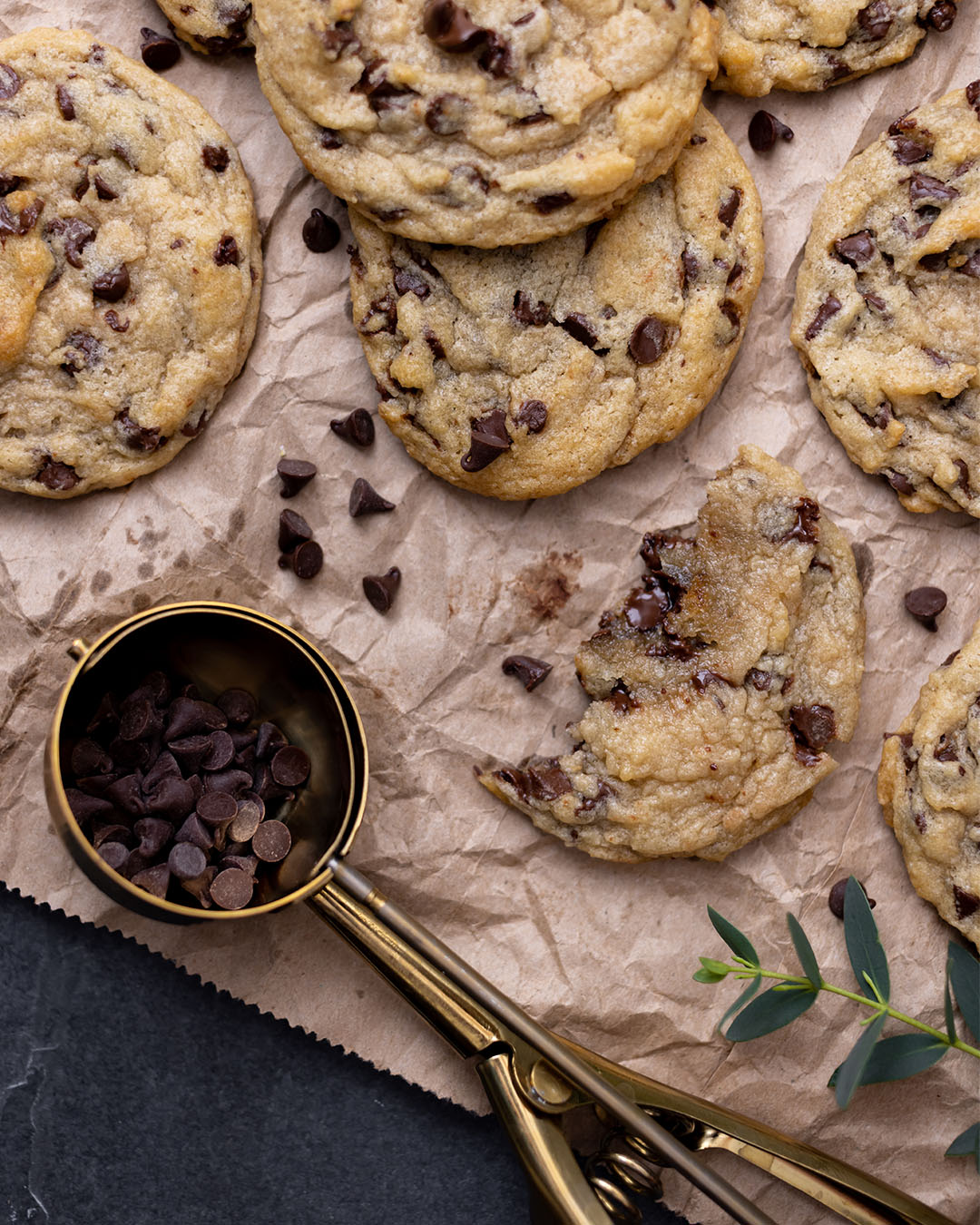
Plant-Based Substitutes for Whipped Cream, Heavy Cream, Marscapone, etc.
Substituting things like whipped cream, heavy cream, and marscapone in recipes is usually where you’ll find the most creative substitutions. There are a lot of fun ones to try, but there are also commercial versions of plant-based whipped creams, heavy creams, and some different creamy plant-based cheeses. The one benefit to doing a tiny bit of extra work when it comes to using more creative substitutes for these items is that they are absolutely delicious. 🙂 Here are just a few ideas for things I’ve tried very successfully.
You can actually use the liquid that comes out of a can of chick peas, called aquafaba to make a great plant-based whipped cream substitute! Just sweeten the aquafaba, add a bit of vanilla, and whip it up using the whisk attachment on your stand mixer, just like whipped cream!
Canned coconut milk works much the same way and creates an amazing whipped cream. Just make sure to include the coconut water, and the thicker coconut cream out of the can as well.
If you soak cashews in warm water for an hour or two, then blend them up, the results are absolutely amazing. You can use cashews to make all different types of cheeses, milks, and cream-type products. My plant-based tiramisu recipe is a great example of a recipe that uses both whipped coconut milk and blended cashews with delicious results. Definitely a favorite in this house!
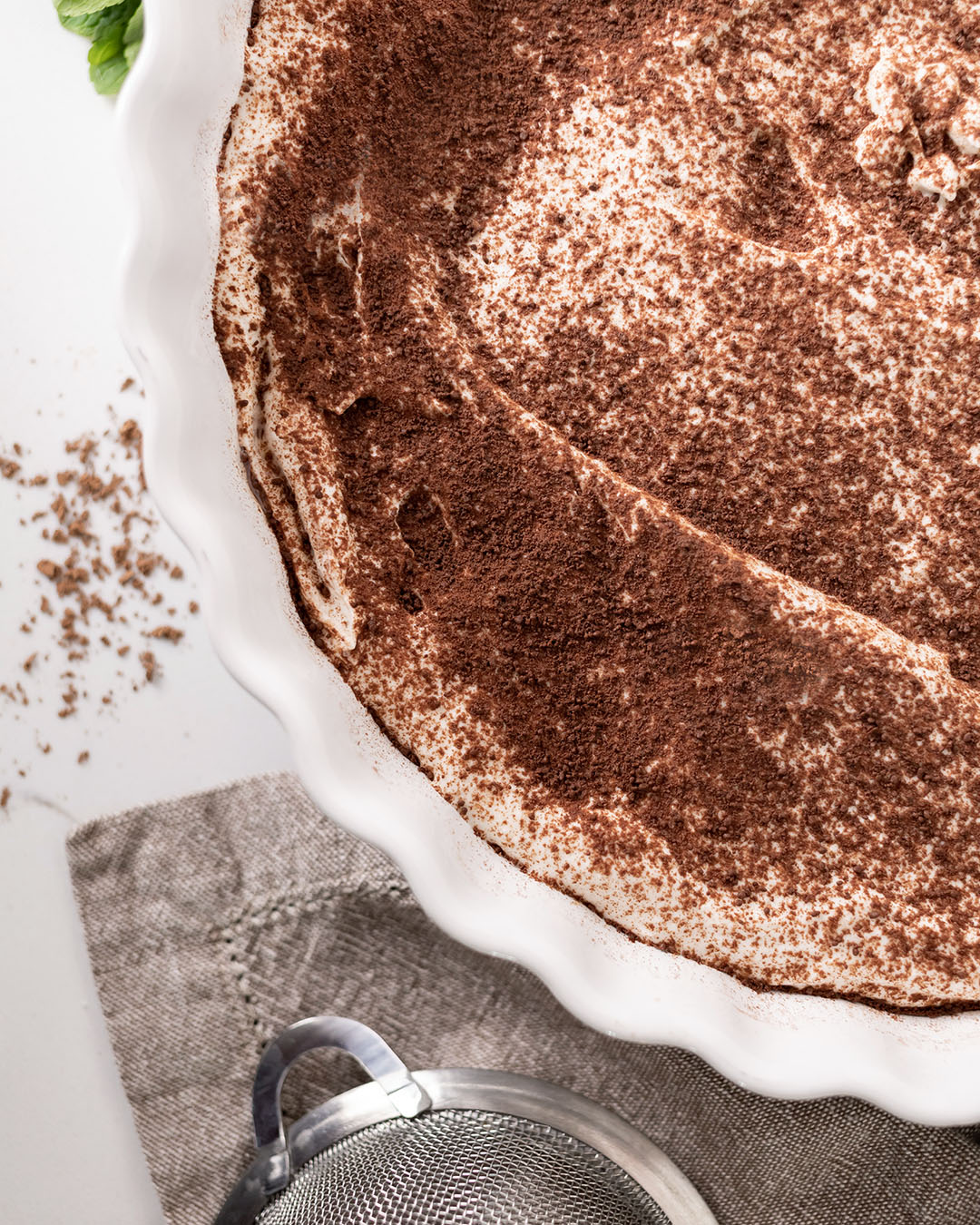
Have you ever attempted any plant-based baking recipes? Do you have plant-based friends and family members that you’re hoping to learn to bake for?
Basic Tools for Plant-Based Baking
Here’s a quick list of the tools I use most often in all my plant-based baking endeavours. You really only need a few simple things, but being set up with the right tools makes it so much easier to tackle baking recipes that might (at first) be a little outside your comfort zone.
- Stand mixer (with paddle and whisk attachments)
- Large and small rubber spatulas
- A good quality half-sheet
- Silpat baking mats or parchment
- Cooling racks
- Food processor
- A good set of measuring cups and spoons (the uncommon measurement sizes = essential for me)
- A good metal spatula
- A small sifter/strainer
- A basic rolling pin
- A good loaf pan that releases easily (also love this one)
- A cookie scoop
- Large jars for making essential ingredients easy to access
MORE IDEAS LIKE THIS
- Soft and Chewy Plant-Based Chocolate Chip Cookies
- Plant-Based Pecan Snowball Cookies
- Soft and Chewy Sprinkle Cookies
- Gluten-Free Vegan Lemon Loaf Recipe
- Easy Plant-Based Pancake Recipe
- The Creek Line House Food and Recipe Archives
This post contains affiliate links.
Courtenay Hartford is the author of creeklinehouse.com, a blog based on her adventures renovating a 120-year-old farmhouse in rural Ontario, Canada. On her blog, Courtenay shares interior design tips based on her own farmhouse and her work as founder and stylist of the interior photography firm Art & Spaces. She also writes about her farmhouse garden, plant-based recipes, family travel, and homekeeping best practices. Courtenay is the author of the book The Cleaning Ninja and has been featured in numerous magazines including Country Sampler Farmhouse Style, Better Homes and Gardens, Parents Magazine, Real Simple, and Our Homes.
